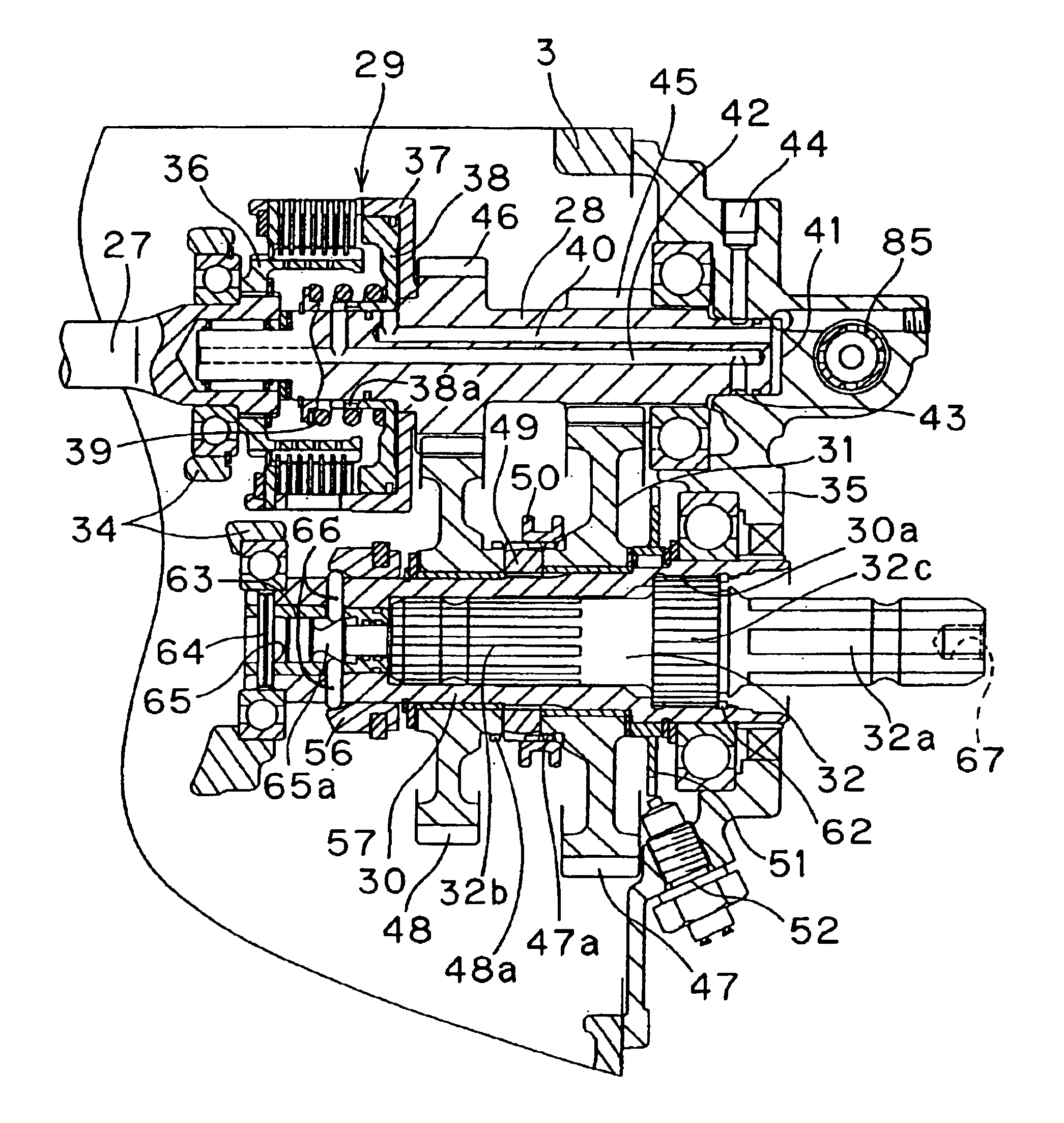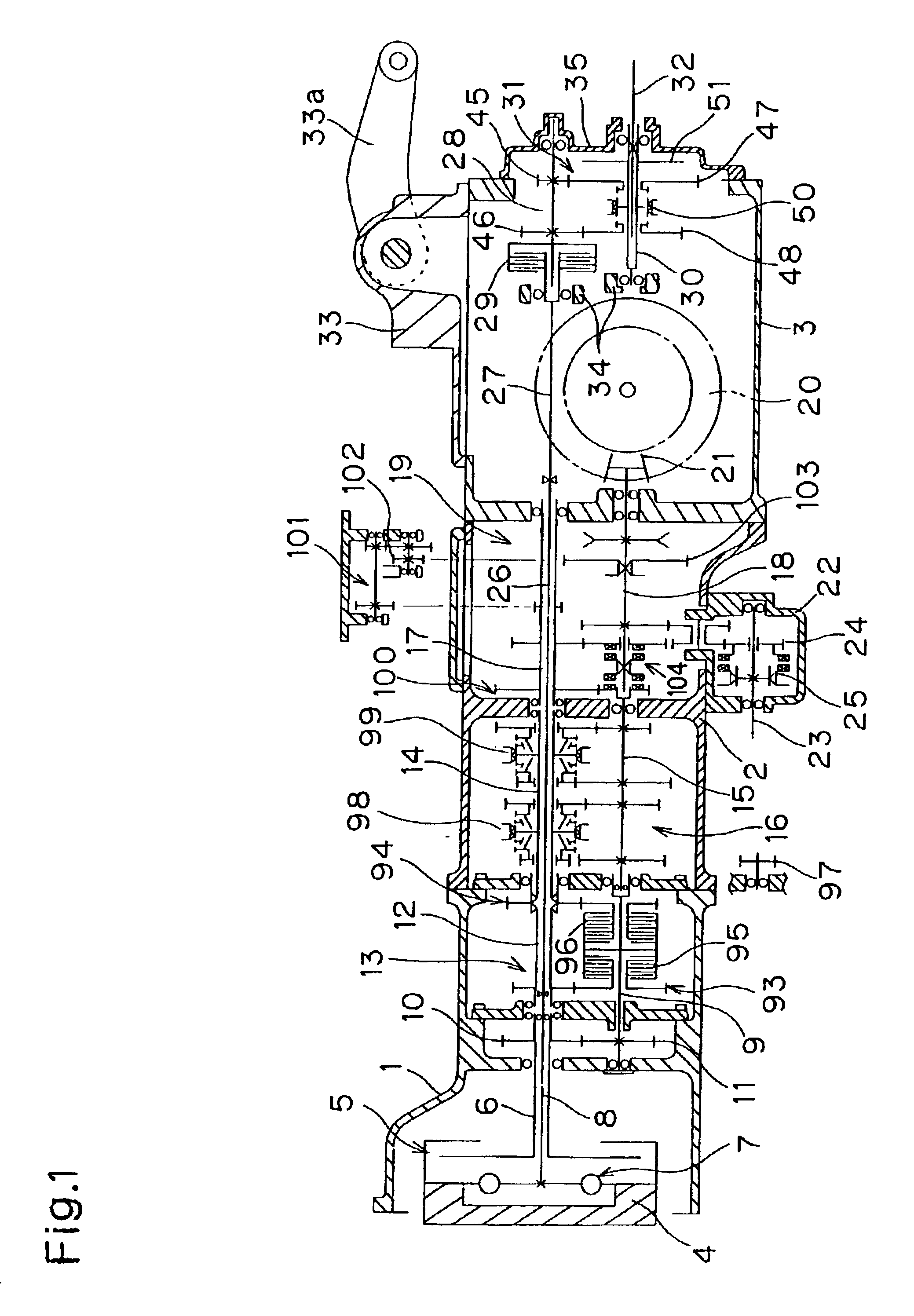Power take-off assembly of a working vehicle
a technology of working vehicle and power take-off assembly, which is applied in the direction of auxiliary drives, control devices, gears, etc., can solve the problems of affecting the operation of the working vehicle, changing the rotary speed of the output sleeve, and the actuator is not suited to the working vehicle having a lever-operated operation, so as to achieve easy change of the specification of the power take-off assembly and increase the size of the arrangemen
- Summary
- Abstract
- Description
- Claims
- Application Information
AI Technical Summary
Benefits of technology
Problems solved by technology
Method used
Image
Examples
first embodiment
[0040]Description will be given of the present invention shown in FIGS. 1-11. Referring to a transmission system of a tractor shown in FIG. 1, a front housing 1, a main housing 2 and a rear housing 3 are continuously joined to one another from ahead to behind so as to constitute a transmission housing of the tractor.
[0041]Front housing 1 incorporates an engine flywheel 4 at the foremost area therein, a main traveling-driving sleeve 6 connected to flywheel 4 through a main clutch 5, and a main PTO-driving shaft 8 connected to flywheel 4 through a buffering coupler 7.
[0042]A driving shaft 9 is disposed below sleeve 6. Sleeve 6 and shaft 9 are drivingly connected to each other through mutually meshing gears 10 and 11. A driven sleeve 12 is disposed coaxially with sleeve 6. A high / low speed changing assembly 13 is interposed between driving shaft 9 and driven sleeve 12. In a front half area of main housing 2, a driving sleeve 14 is disposed coaxially to driven sleeve 12 and connected th...
second embodiment
[0076]power take-off assembly shown in FIGS. 14 to 17 is almost similar to the above embodiment. As shown in FIGS. 14 to 16, the different point thereof from the above embodiment is that a collar 150 corresponding to shifter collar 50 is fitted around output sleeve 30 through splines and no member corresponding to collar 56 is provided.
[0077]Gears 47 and 48 are freely rotatably provided around output sleeve 30 so as to constitute PTO speed changing arrangement 31. A boss of gear 47 is greatly extended along output sleeve 30 toward collar 150. An outer periphery of utmost end of the extended boss of gear 47 serves as a toothed portion 47a which is enabled to mesh with a toothed portion 150a formed on an inner peripheral surface of collar 150. Gear 48 is freely rotatably disposed around the boss of gear 47 through a couple of ball bearings 151. A boss of gear 48 projects from bearing 151 toward collar 150 so as to be formed at an inner periphery of utmost end thereof with a toothed po...
PUM
 Login to View More
Login to View More Abstract
Description
Claims
Application Information
 Login to View More
Login to View More - R&D
- Intellectual Property
- Life Sciences
- Materials
- Tech Scout
- Unparalleled Data Quality
- Higher Quality Content
- 60% Fewer Hallucinations
Browse by: Latest US Patents, China's latest patents, Technical Efficacy Thesaurus, Application Domain, Technology Topic, Popular Technical Reports.
© 2025 PatSnap. All rights reserved.Legal|Privacy policy|Modern Slavery Act Transparency Statement|Sitemap|About US| Contact US: help@patsnap.com



